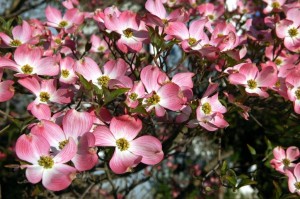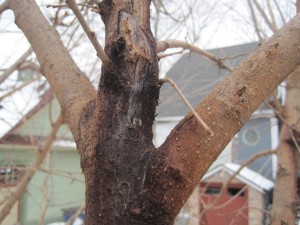
Tree experts or tree surgeons, are just like a doctor.
A tree surgeons job, is mainly preventive medicine to keep your trees as healthy and beautiful as possible.
Tree experts take care of shade and evergreen trees after they are planted. In the south that also includes palm tree trimming. They do no landscaping or planting themselves.
About the only difference between their methods of operation is that the dendrician (a term for someone who climbs trees to trim them) can’t take his patient to a hospital.
The Tree Expert A Surgeon
Tree experts are surgeons, and have been termed a tree surgeon, as you know. When they prune away dead and diseased wood (with saws and chisels that are sometimes sterilized, incidentally), they perform an operation – surgery.
All shade trees should be pruned. For example, it is the reason elms should be pruned early in the spring before the beetles emerge.
Dogwood, hard maple, birch, yellowwood and walnut—bleeders – are pruned after they have leafed out.
Leave Pruning To The Expert
The tree expert does not recommend you do pruning yourself, except perhaps simple pruning on shrubs or low trees, any more than a doctor would recommend you do surgery. There is more to pruning properly and to dressing the wounds then many people understand.
Besides, pruning a high tree is dangerous, and the tree man has had long training in climbing and in the use of ropes.
As does a doctor, the tree professional applies external medicine when they spray. They have to be just as certain to use the right medicine as does the M.D., and that they give it at the right time.
Battling Insects Pests and Diseases
There are hundreds of kinds of insects harmful to shade trees and ornamentals. All insects have four stages – adults, pupae, eggs, larvae. The tree expert knows which stage is most vulnerable for each insect. Along with the time of year it is most important for spraying. May is the big month.
The tree man knows what epidemics have occurred, and what to watch out for. This month (May), for instance, they will be spraying to prevent a serious gypsy moth in parts of New England; they’ll be expecting cankerworm outbreaks elsewhere.
Like a doctor, a tree expert can call on a laboratory for assistance, cut off a twig and have a cross-section analyzed. Suppose they see an insect they do not recognize? The sample gets sent to a laboratory.
If it still is not identified, the lab could turn the bug loose on a tree branch, caged in by cellophane, and watch it till they know its life-cycle. Then they will know how to attack it.
The tree expert must study the latest developments in the field.
Prescriptions For Tree Patients
Tree experts prescribe and supervises the proper diet for their patients. They apply tree food to the roots of trees, using a slow-acting food, so balanced and constituted that it becomes available as the tree needs it.
As a patient sometimes goes on a liquid diet, so too, do trees. Under the dendrician’s care, after a drought, trees may be fed by a liquid foliar fertilization injection. This is an emergency treatment, or “shot in the arm,” and a tree will respond quickly to it or not at all.
The doctor applies splints to broken arms or legs. The tree expert braces and cables trees or their limbs. The most common type of bracing is holding together the V-crotch of a tree, where the trunk divides into two limbs. Weakness at this point, rain, ice, and wind can break down a tree.
And like the doctor, the dendrician dresses wounds. He knows what to spread onto a pruning cut. For example, He knows how to fill cavities, which are wounds.
Parallel Functions Of A Doctor
Pruning, spraying, feeding, bracing and cabling, and cavity treatment – these are the main functions of the tree expert.

Every one is paralleled by a function of the doctor.
Because a tree is one of the few things you can own that increases in value with age, a tree expert like a doctor can help you keep your trees in fine health.
Do an online search for local “tree expert,” “tree surgeon,” or “tree service.”
A recommended tree professional will have had good, scientific, and practical training – some are college trained – be licensed, and professional in every sense.
There’s another way we’re like doctors. Doctors know there is always a better chance to end an ailment if they get at it soon enough.
Do not till a tree is half-dead before you call a tree professional in. Instead, if you see any thing wrong with one of your trees, get it diagnosed and treated early.
What You Can Do To Care For Your Trees
If the tree expert is the doctor, you are the nurse. This is your busy season because your shade trees need the most help between now and mid-July. This is the time of year when trees face the most ravaging effects of insects and diseases.
It is the time when trees must be at their peak efficiency – to put forth new leaves, make terminal growth, begin to lay down annual wood, start new buds for next year, and extend their root systems.
Besides those things shown on our big drawing of a maple. there are other things you can do to help your trees right now:
Get Rid of Deadwood – Dead and dying wood caused by winter injury, last year’s drought, or borers and beetles will show up in the spring. So will branches twisted and broken by winter storms.
All dead and diseased wood should be pruned, and the diseased wood burned.
Pruning is a science, and often needs experts. For safety’s sake, owners are advised to prune only low trees or shrubs (not high trees).
Check the Leaves – Are they as full, as large, as green as they were last year? If not, the tree may be in trouble.
Check Bracing – Tighten cables, braces, and other supports that may have become loosened during winter.
Check Twig Growth – Does it compare favorably with the growth of previous years? If not, be concerned.
Look for Insects – Are there tiny holes in leaves? Egg deposits? Cankerworms may be at work. Tent caterpillars, scale, aphids, and mites may be building up.
Watch for Diseases – Leaf spots are the first symptoms of outward trouble. Leaf fungi are most damaging if the spring is wet and cold. Internal diseases, such as maple wilt and oak wilt may show up first in wilting leaves.



Comments on this entry are closed.